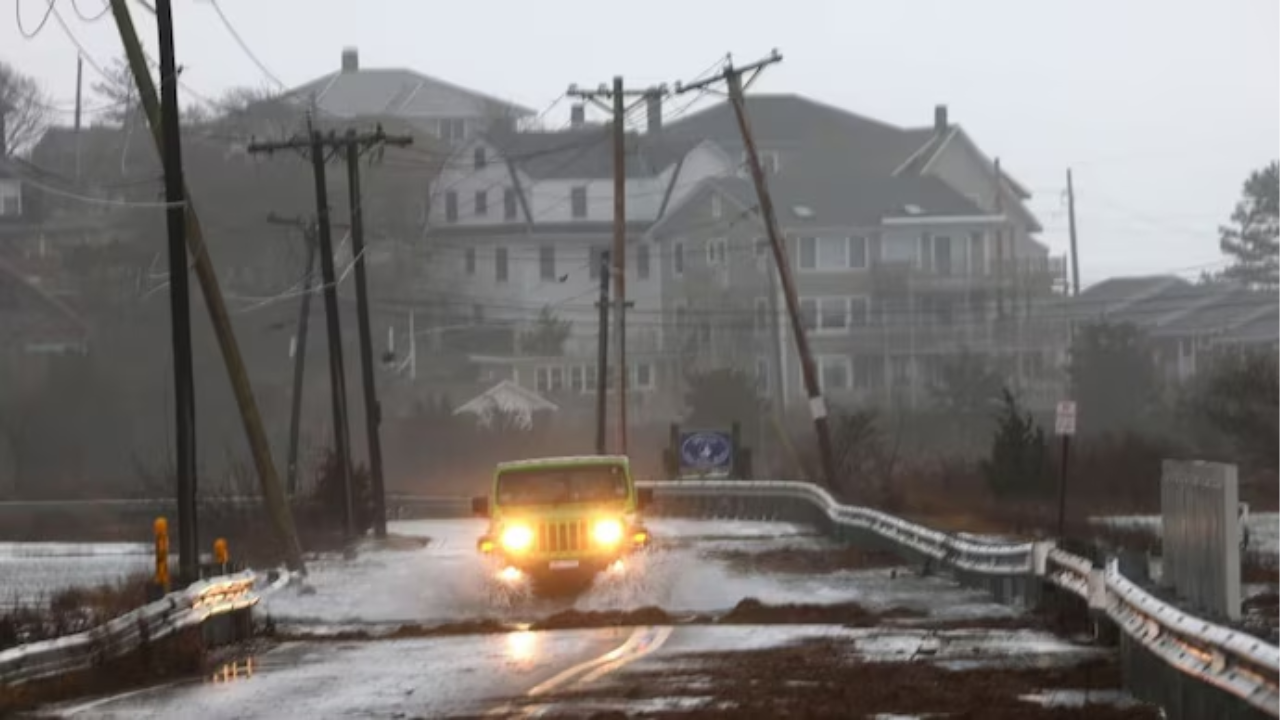- Shock to the System: Approximately 18 million people across Alabama, Florida, and Georgia woke up to an abrupt shift to winter as temperatures plummeted. Many areas experienced wintry conditions after hitting the 70s and 80s (21° to 27°C) just days before.
- Records Broken: Jacksonville, Florida, shattered its previous daily low record of $35^{\circ}F$ set in 1977, hitting 28°F( 2°c) early Tuesday.
- ‘Falling Iguana Advisory’: Due to widespread temperatures of 40°F (4°C) or below, Florida faced the bizarre phenomenon of iguanas going into survival mode and “freezing” out of trees.
- Widespread Chill: Even southern areas like Fort Lauderdale and Miami saw early-morning temperatures dip into the upper 40s.
Northeast: Buried in Snow and Ice
- Lake-Effect Snow: Areas along the eastern Great Lakes saw significant snowfall as the cold air passed over warmer waters.
- Michigan Gets Dumped: The town of Ubly in eastern Michigan was socked with nearly 8 inches of snow by Tuesday morning, with wind chills dropping well below freezing.
- Upstate New York: Communities downwind of Lake Erie and Lake Ontario (including Buffalo, Rochester, and Syracuse) were under a winter weather advisory, predicting 2 to 6 inches of snow, with up to 9 inches expected in the Tug Hill Plateau.
- Travel Hazards: Snow and ice contributed to dozens of accidents across West Virginia, and heavy snow caused dangerous driving conditions on Interstate 80 in central Pennsylvania and Interstate 89 in Vermont.
West Coast: California Braces for Flood Risk
- Atmospheric River Incoming: A Pacific storm, described as a “long plume of tropical moisture,” is headed for California.
- Flood Risk: Starting Wednesday, the storm will drench the San Francisco Bay Area before shifting south. Over 21 million people, including those in the Los Angeles area, are at risk of excessive rain by Thursday.
- Mountain Snow: Forecasters predict more than a foot of snow in parts of the Sierra Nevada.
- Burn Scar Vulnerability: Communities near wildfire burn areas are especially vulnerable to runoff, mudslides, and debris flows due to the soil’s poor absorption of heavy rainfall.
















